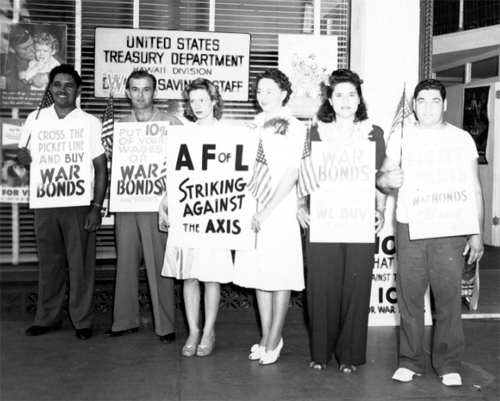How Labor Unions Hurt the Economy

“The nastiest, hottest, most god-awful job I ever had was working in the foundry, and I got out of that place as fast as I could…”
My father’s experience of working in the scorching heat and grit that was the foundry for an auto parts manufacturer wasn’t the most glamorous of jobs, but it does give a sense of respect for the hard working Americans of the past and those who carry on today.
The country was much different just 30 years ago; before we had stepped out of the Industrial Age and into the Information Age. Working conditions were more harsh, people worked long hours performing manual, repetitive tasks, and concerns for health and safety weren’t as evident as they are today. These factors within the work environment called for a middleman, or some type of agent to look after the livelihood of the everyday worker. This role has traditionally been filled by the factions of labor unions in the United States for the past few centuries.
The labor unions did benefit workers by increasing the minimum wage time in again, and they also bargained with otherwise stubborn employers on the behalf of the workers, which was after all, what they were meant to do.
In today’s modern society several factors have changed, unions are more of an economic hindrance than a beneficial big brother. The typical working conditions have improved dramatically, business competition is fiercer than ever, and technological innovation is continually evolving. Unions sought their highest level of activity in the 1950’s, however, today it is less than nine percent. There is one factor that stands between businesses employers and union agents that has not changed, and that factor is the economic forces of supply and demand in the labor market.
Labor supply must equal labor demand; hence the equilibrium wage created within the labor market shouldn’t be artificially inflated by means of union negotiation. That means if someone makes $10 per hour, there are supply and demand factors already in place that have determined that wage, such as the level of education and skills deemed necessary for the job. In this case, supply could be the number of people able and qualified to do the job, if there are many the wage will be low. If the job itself is in high demand, then the pay will be higher than one that is in low demand. Seems like common sense, right? For union members bargaining for higher wages, this concept is nonexistent.
When labor unions negotiate higher wages, it may be considered a victory for the employees, but what really happens when money is redistributed through raises and promotions? The money distributed as a pay increase comes from a company’s contribution margin. This is the cash a company has left over after its expenses are paid from its gross revenue. Let’s take a look with real numbers. If a company makes a total of $100M, it may pay $90M in expenses like salaries, wages, taxes, etc. This leaves the company with $10M profit margin, which is typically reinvested in projects to grow the company or partially paid out in the form of dividends if the company is publicly traded. This typically leads to stores raising the price of their goods to keep up with the extra “costs” associated with being unionized. The money given for raises to benefit the few almost always comes from the pockets of the consumers.
A union representative might argue that the company should give the money it spends on projects back to its workers in the form of a raise. New projects in R&D lead to more innovative products and keep a company on the edge of the competition; such was the lesson learned by Detroit auto manufacturers. The UAW coaxed the Detroit auto manufacturers into giving profits to be used toward their R&D investments to the UAW members in the form of raises. The resulting action was Detroit lagging far behind the competition in the “green movement” towards more fuel efficient cars, which may have been designed using the money that was given to unions. This led to several UAW workers losing their jobs, defeating one of the union’s primary objectives.
People simply don’t need representatives in today’s work place. Although labor unions hold a place in America’s history, they are not necessary for the future success of our country. The economic forces of the market place should be free to determine the proper pay for work to be done. Unions cap wages, they do not recognize the achievements of individuals, they ignore skill level, reduce capital for businesses, and raise prices for consumers. These union externalities counteract with the values embedded in the American Dream. The people of this country are hard-working, free spirited, and ingenuous and should be praised for their efforts, not withheld from their full potential by a union contract.








